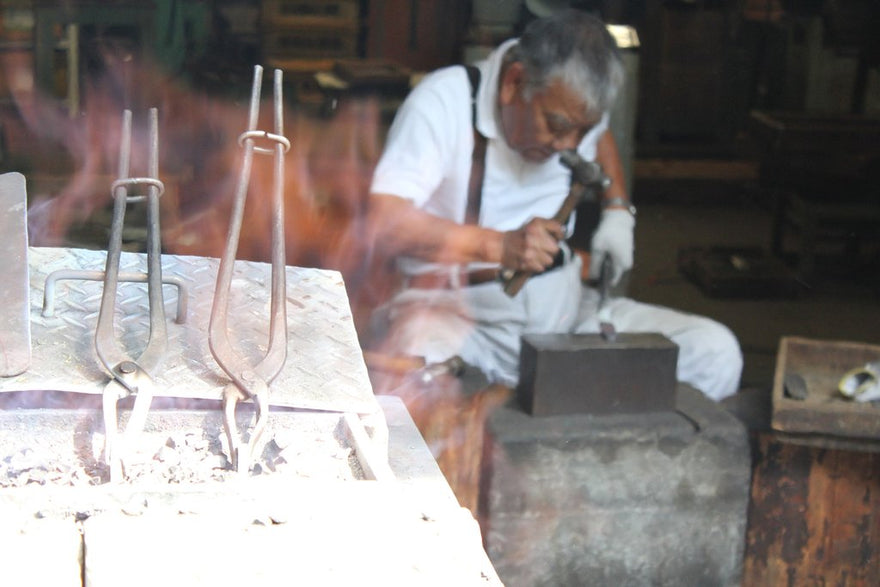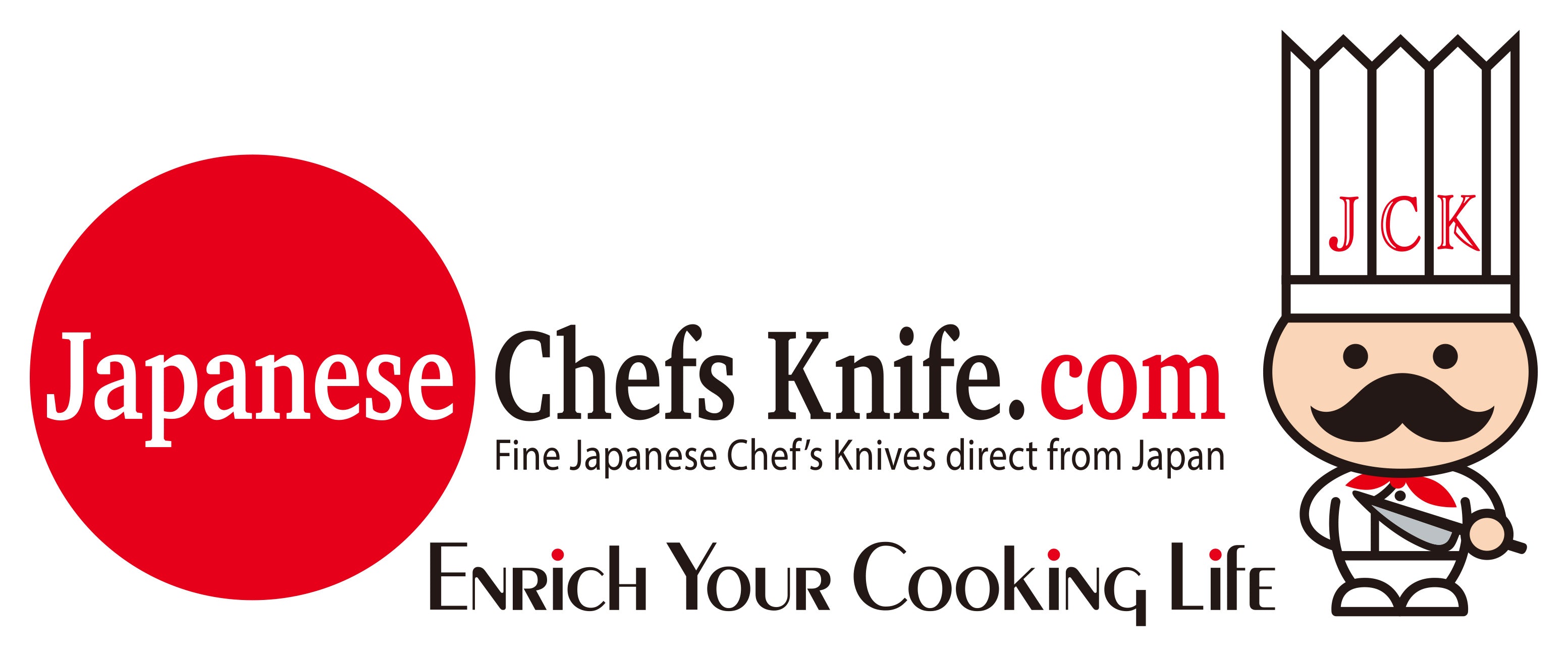We Offer DHL EXPRESS Flat Rate Shipping Worldwide. Just $10 USD for US, Canada, Australia, Asian countries. US$15 for Europe and other Countries in the world
We Offer DHL EXPRESS Flat Rate Shipping Worldwide. Just $10 USD for US, Canada, Australia, Asian countries. US$15 for Europe and other Countries in the world
August 15, 2022

In this blog, we would like to introduce more details about Hattori, Hattori Craftsmanship and Making Steps. We all hope you will enjoy the Hattori Video and enjoy meeting with Grand Master Ichiro Hattori and Hattori Knives.
Ichiro Hattori is now 82 years old and his knife-making career extends over 60 years. His life has always involved knife making.
Please learn about his history, his sophisticated works and his life-time philosophy: 心 "Spirit" 技 "Artistry" 体 "Continuity"
Hattori Company was established in 1971 and is located in ‘The Japanese Knife Capital’, Seki City, an area surrounded by beautiful nature.
The Hattori Knife Factory has many facilities and tools that have been carefully used and maintained for decades; This creates a special atmosphere and we can really feel the spirit of craftsmanship.
0:43~0:46 Hattori’s Large Wet Grindstone Machine (Mizu-To). Hattori pays extra attention during the grinding process, carefully creating a thin blade, with high cutting performance and ample strength.
0:47~0:49 After the heat treatment, grinding and sharpening processes, Hattori pays extra attention whilst straightening the blades using a sophisticated hammering process. This important process aids efficiency and precision during the next manufacturing processes.
1:23~1:25 Using his sophisticated manual hammering process, Hattori creates the layers of patterned Cowry X Damascus steel. He carefully adjusts the power of each hammer blow as he visualizes the finished, beautiful Cowry X Damascus pattern in his mind.
1:26~1:32 Hattori’s apprentice, Mr. Takahashi, concentrates hard whilst straightening hunting knife blades. Hattori is often visited by young, passionate craftsmen who want to become his apprentice; Travelling from far way places — such as Hokkaido Prefecture, Shimane Prefecture and Tokyo — they want to work for Hattori and become great craftsmen. Some apprentices stay for decades and become very skillful, experienced craftspeople, with specialist knowledge of each manufacturing process.
1:33~1:37 Hattori’s apprentice, Mr. Maruyama, is concentrating on buffing and finishing the blade. Manual hand buffing ensures the beautiful, consistent finish of Hattori’s high-quality blades.
1:38~1:41 Hattori’s apprentice, Mr. Nagatomo, carefully handcrafts the perfectly-shaped handle of a Hattori FH Series kitchen knife.
Using numerous pieces of equipment and over 10 different manufacturing steps, I observed him manually shape and contour the handle until it is perfectly comfortable.
Each process was necessary; Achieving Hattori’s legendary quality takes time, skill and care.
1:42~1:44 Hattori Craftspeople Ms. Furuta and Mr. Sawai use small pieces of whetstone whilst grinding and sharpening the blades 100% by hand. To maximize the efficiency of sharpening each part of the blade, they pay extra attention during hand sharpening. This handcrafting process is time-consuming, but it is one of the most important steps in making Hattori KD Cowry X Damascus knife blades and ensuring high cutting performance.
1:44~1:46 Hattori’s apprentice, Mr. Ichikawa, is an expert in handle assembly. He is shaping a Hattori FH Series knife bolster and creating a flat surface for handle assembly. This detailed, precise handwork is necessary to achieve Hattori’s famous seamless fit and excellent finish.
1:47~1:51 Master Hattori manually grinds a blade on a Large Wet Grindstones (Mizu-To). This process requires the sensitive touch and skill of an experienced craftsperson. The thin, convex cross section and fine edge provide optimum cutting performance, edge retention and strength.
2:30~2:31 Masako Hattori, Master Hattori’s daughter, is drawing plans for a limited edition knife. She has worked at the Hattori Company for over 30 years and has devoted her life to the business.
2:33~2:34 Master Hattori works very hard when he is knife making, so he relaxes by spending time in nature and gardening. Next to Master Hattori is Ms. Furuta, a long-time friend of Masakoto Hattori and a faithful supporter of the Hattori Company.
2:37~2:37 Hattori’s best apprentice, Mr. Yamamoto, is making a custom Buffing Wheel, using a method devised by Hattori. Hattori cares deeply about the tools and materials that are used to create the company’s high-quality knives.
2:47~ The Quenching Process. Optimization of the heat treatment process is essential for peak sharpness and edge retention.
2:59~ Hattori’s apprentice, Mr. Ichikawa, carefully inspects the fit and finish of the knife during the assembly process, he wants to see a seamless, well constructed knife.
3:02~ Hattori craftsman, Mr. Itou, carefully drills a precise hole through the knife tang.
3:03~ Hattori’s best apprentice, Mr. Yamamoto, is making the layers of patterned Cowry X Damascus steel using Hattori’s sophisticated manual hammering process.
3:04~ Masako Hattori carefully sharpens the cutting edge of a hunting knife blade.
3:13~ Hattori creates the layers of patterned Cowry X Damascus steel using his sophisticated manual hammering process. He carefully adjusts the power of each hammer blow as he visualizes the finished, beautiful Cowry X Damascus pattern in his mind. Watching Master Hattori create his Damascus from just 1 meter away, I was thoroughly impressed. In my heart, I felt there must be a Kami (A divine spirit, or deity) residing in him, or working through him.
3:34~ Master Hattori and his daughter, Masako, walk back to the factory together. They have worked hard to build the Hattori brand name, Hattori quality, Hattori history and Hattori pride.
Hattori: Passion and Craftsmanship for the Future.
April 26, 2024
March 25, 2024
This guide covers the maintenance of sharpening stones, including soaking, wetting, and the creation of a slurry with a Nagura Stone for enhanced sharpening, alongside advanced techniques like stone flattening and proper storage. This comprehensive exploration serves as a journey towards mastering an essential skill for culinary professionals and enthusiasts, highlighting the artistry and efficiency in kitchen tool maintenance.
March 06, 2024
Sign up to get the latest on sales, new releases and more …
